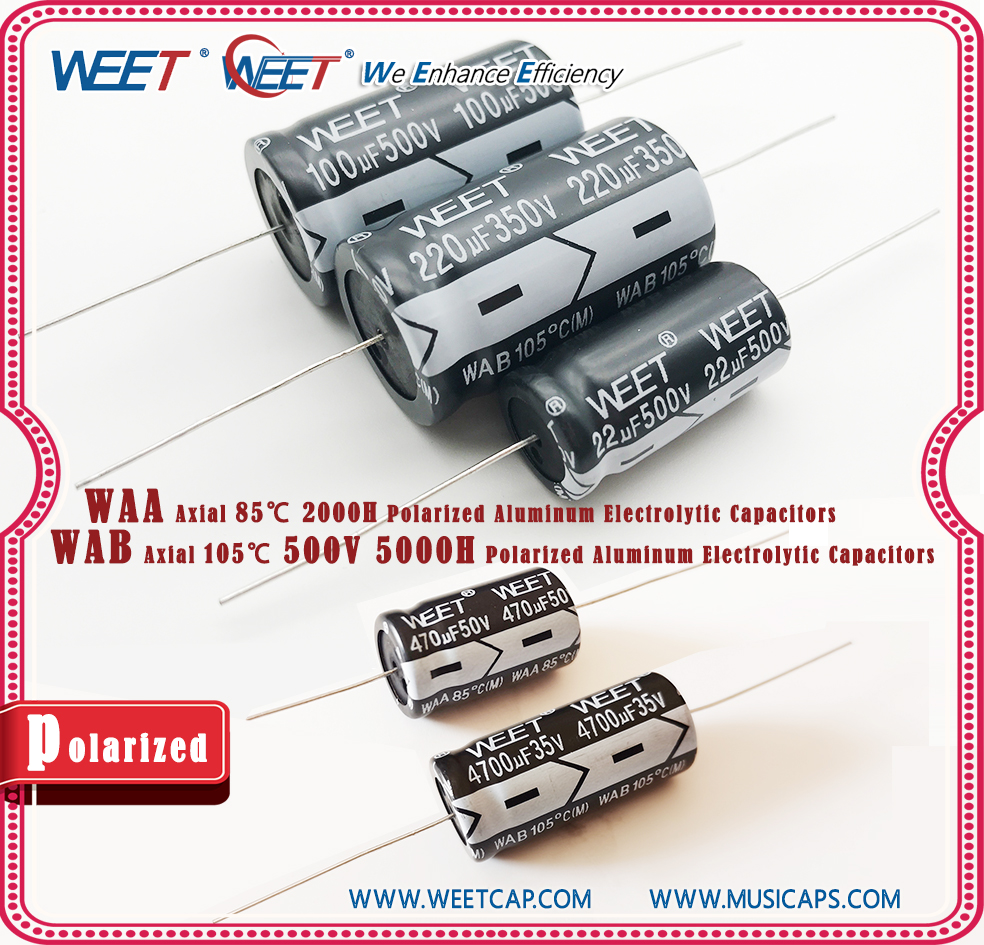Aluminum electrolytic capacitors are divided into polar aluminum electrolytic capacitors and non-polar aluminum electrolytic capacitors. Among them, non-polar aluminum electrolytic capacitors are used most in audio frequency dividers, and polar electrolytic capacitors are used most in power filter circuits.
Overview of Polarized Capacitor and Non polar Capacitor
The ideal capacitor has no polarity. But in practice, in order to obtain large capacity, some special materials and structures are used, which leads to the fact that some actual capacitors are polar.
Common polar capacitors are aluminum electrolytic capacitors. Electrolytic capacitors are generally relatively large in capacity. If you want to make a large capacity non-polar capacitor, it will not be so easy, and the volume will become large.
This is why there are so many polar capacitors in the actual circuit. Because of its small size, and because the voltage in such a circuit has only one direction, the capacitor with polarity can be used.
We use a polar capacitor to avoid its disadvantages and take advantage of its advantages.
A polar capacitor is actually a capacitor that can only be used in one voltage direction. The non-polar capacitor can be used in both voltage directions.
Therefore, from the voltage direction alone, the non-polar capacitor is better than the polar capacitor. It is completely possible to replace the polar capacitor with the non-polar capacitor, as long as the capacity, working voltage, volume, etc. can meet the requirements.
Identification of Polar Capacitor
Below 1μF, the low value capacitance is mostly non polar, but has 1μf Capacitance or greater capacitance value is almost divided into positive and negative poles.
So far, the most commonly used polar capacitors are electrolytic capacitors, and tantalum capacitors are also polar capacitors. The polarity of capacitors installed on printed boards is marked with symbols "+" and "-" near the leads on their shells. In fact, most new capacitors have only "-".
These marks are not necessary because the positive lead of the polar capacitor is always longer. Even if the mark is worn or completely erased, the polarity can be recognized immediately. The capacitor with wrong polarity may be damaged in some occasions.
It is also worth noting that even small reverse voltages and currents may damage some polar capacitors. Such a polar capacitor has no sign of external damage, but if it is correctly used in the circuit at this time, it will show lower than standard performance.
Tantalum capacitors and some advanced electrolytic capacitors have higher damage rate under reverse voltage.

Contact: Wallis Tao
Phone: + 86 13925700687
E-mail: sales@weetcapacitor.com
Add: Qing Hu Village, Qishi Town, Dongguan City, Guangdong